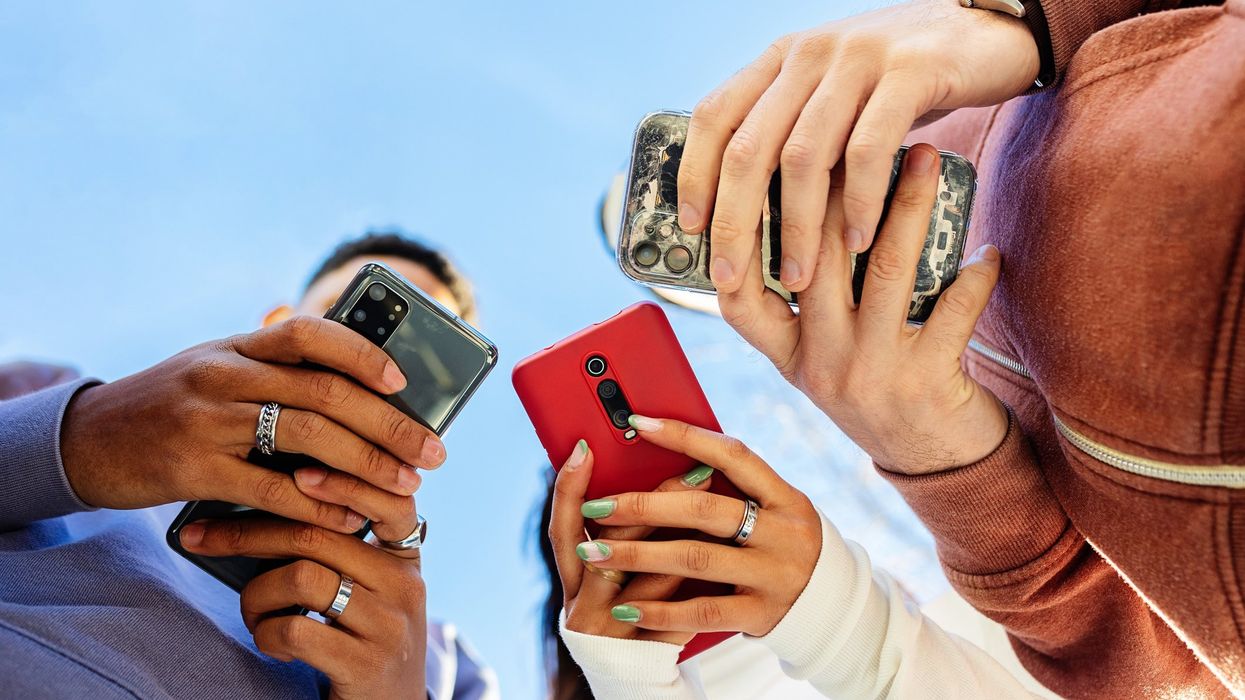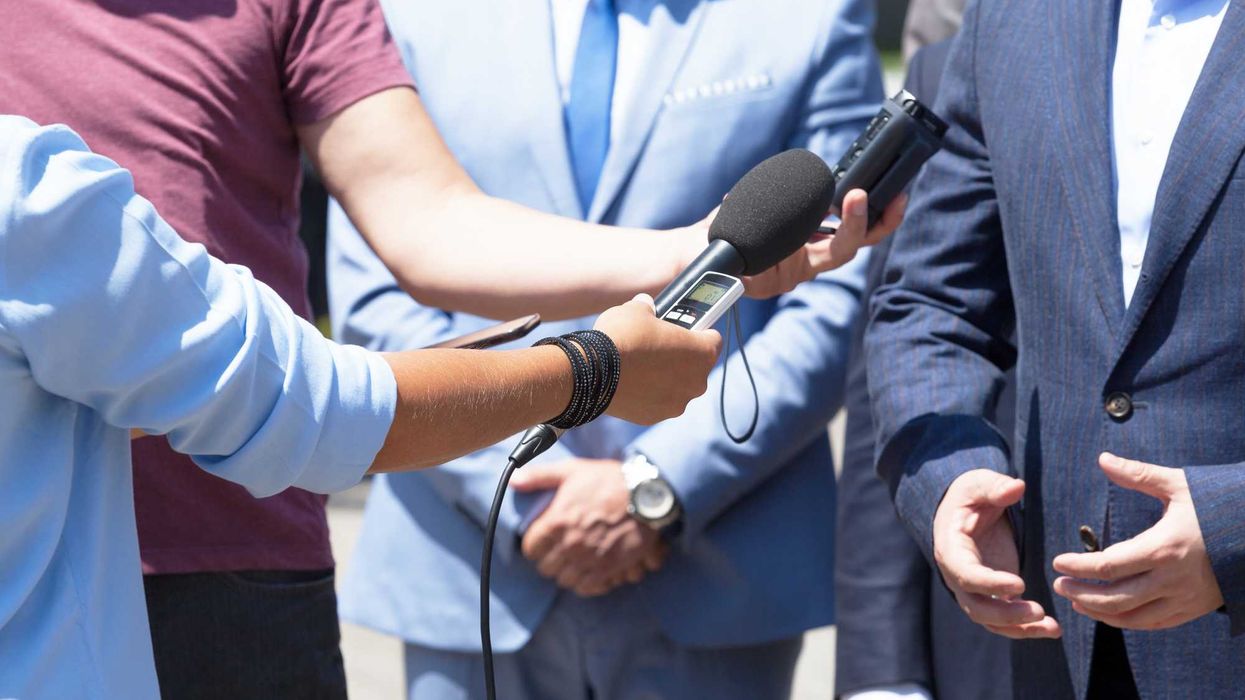Current efforts to improve how Americans think and feel about those across the political spectrum overwhelmingly rely on participation. Participation usually involves interpersonal interaction, mostly to have dialogues or to collectively work on a project together.
These can be valuable, but in order to achieve scale, many efforts must also reach Americans as media consumers, where Americans currently spend much more time.
This is not some “competition” between approaches. They are actually mutually reinforcing: targeting Americans as media consumers should increase participation, and events that are at least partially videotaped can be used to create content for media consumers. Additionally, this is more of a continuum than a binary distinction, since there are options such as being an attendee at an event or creating content that do not fit neatly in either box.
Americans consume much more media than interact across political divides
The average American spends over 10 hours every single day consuming media, according to Nielsen’s 2023 data.
This is dramatically greater than the time spent interacting with fellow Americans across divides. In the recent study The Connection Opportunity from More in Common, fewer than half of Americans in the past year had done each of the seven activities research inquired about, with someone from a different background than them.
In terms of politics, The Connection Opportunity found somewhat under half of Americans who engaged in an extended conversation or talked about group tensions across politics, all the way down to 15% of Americans who worked to achieve a mutual goal that improved their community.
Target Americans as media consumers to reduce Perception Gaps, in addition to as participants
Efforts to reduce perceived political divides – often called Perception Gaps – in the US must acknowledge what Americans are actually doing with their lives right now, consuming hours and hours of media each day. Approaches to reducing Perception Gaps must lean into changing what Americans see and hear about each other across the political spectrum, targeting the media environment.
It may be uncomfortable to acknowledge how many of us Americans spend our time as media consumers. Yet interventions must acknowledge this reality.
Americans need to see each other across politics in a better and more accurate light, rather than the distorted and sometimes even demonized caricatures currently shown in the media environment. Efforts to reach Americans as media consumers to reduce political divides can include vicarious contact (i.e., seeing those across the political interact well), parasocial contact (i.e., developing one-sided relationships with relatable and respectable characters in the other political party), and correcting all sorts of stereotypical views of those in across politics.
A few organizations are encouraging entertainment media to improve depictions of at least interactions between Republicans and Democrats, including Bridge Entertainment Labs, PopShift, and Resetting the Table.
There also needs to be efforts to correct perverse incentives in news and social media that encourage overly negative portrayals of fellow Americans across politics.
All this said, there should still be efforts to reach Americans as participants, either focused more on dialogue and interpersonal communication (e.g., a Braver Angels workshop), or approaches designed to improve a given situation in a community (e.g., Urban Rural Action’s effort “Uniting for Safe and Strong Communities in South-Central Pennsylvania”).
Reaching Americans as media consumers motivates participation
In fact, efforts to reach Americans as media consumers should motivate participation in these types of activities. Referring once again to More in Common’s Connection Opportunity report, and a summary in The Fulcrum that James wrote, the most substantial reasons Americans give for wanting to correct across divides are “perceived community norms” (increasing interest in connecting) and “intergroup anxiety” (decreasing interest in connecting).
Efforts to reach Americans as media consumers should increase perceived community norms about connecting across the political spectrum. For instance, using the concept of vicarious contact, if Americans see others like themselves positively interacting with those in the other political party, many Americans should be more open to doing this themselves.
These efforts should also reduce intergroup anxiety. We at More Like US have a mnemonic CAST for those in the Arts to develop content to CAST fellow Americans as more Complex, Admirable, Similar, and worthy of Togetherness (good conversation partners, collaborators, or friends) than currently believed. This is designed to reduce distorted thinking of those across politics that can increase anxiety to engage across political differences.
To really emphasize how CAST can reduce intergroup anxiety, think of the opposites of CAST. Many would have a great deal of anxiety if they think of interacting with someone who they see as likely stereotypical (rather than Complex), cognitively and morally inferior (rather than Admirable or at least respectable in some ways), totally different (rather than having some Similarity), and as basically worthy of avoidance (rather than worthy of various forms of Togetherness).
Additionally, events with participants provide content for media consumers
The reverse is also true in this mutually-beneficial relationship: more events with participants lead to more potential content that can be created for media consumers.
Some of this work has already been done. Examples include the Braver Angels: Reuniting America documentary about a Braver Angels Red / Blue workshop, and Builders’ The Tennessee 11 documentary about a group of 11 Tennessee collectively developing shared gun control / rights policies. Shorter content includes a 7-minute video about a citizens assembly in Deschutes County, Oregon. Even shorter content suitable for social media such as Instagram or TikTok is also possible.
Benefits and drawbacks of both media consumer and participant approaches
It needs to be clear that efforts to reduce perceived political divides should not devolve into a ridiculous battle between reaching Americans as media consumers “versus” reaching Americans as participants. This said, one must recognize some benefits and drawbacks of each.
Media consumer approaches offer much greater possibility for scale, in a country of over 340 million residents. Messages and relevant data showing similarities can come from all sorts of sources in the media environment, including entertainment, political leaders, athletes, religious leaders, schools and higher education, journalism, etc. More Like US focuses on doing just this. Similar to an advertising model, it is possible to reach people multiple times with messages and content that eventually get remembered and absorbed. It is a model that relies on repetition and breadth.
Even if events could reach 1,000 Americans each day, it would take over 400 years to reach all who voted in the 2024 election – a single time.
A single participant experience likely will be more impactful than a single piece of content seen. Many will likely remember and feel it more, increasing the impact from a single event.
This said, many Americans will not have the time, interest, or energy to participate in any event, let alone repeated events. There are also limits on how many events can be hosted.
A continuum rather than a binary between media consumer and participant approaches
In addition to roles of “media consumer” and “participant,” there are opportunities such as being an attendee at an event or creating media content. These opportunities do not neatly map onto a media consumer vs. participant binary, so thinking about the roles Americans can play much better maps onto something like a continuum, rather than a binary distinction.
Being an attendee at an event involves receiving content, but one has to take a much more proactive step than looking at a screen. A content creator is in a way “participating” quite intensively, but not necessarily in an interpersonal way.
Nevertheless, many Americans will only be media consumers, since all these other options require substantial effort. Americans who lead busy lives trying to make a living and taking care of kids or other loved ones cannot all be expected to make very active efforts.
Conclusion: Target Americans as media consumers, without ignoring other options
Maybe in the future, America will be so bustling with community-driven associational life and sufficient support (e.g., childcare, elder care) that participant experiences alone will be enough. But until this future comes to pass, it is necessary to reach people where they are today, as media consumers watching and absorbing content for hours each day. This is in addition to opportunities for those who have the time, interest, and energy for participant approaches.
Luckily, options reinforce each other. Media consumer approaches motivate participation, and participatory events provide underlying content for media consumption.
Let’s have a field reducing perceived political divides that reaches Americans both as media consumers and participants.
James Coan is the co-founder and executive director of More Like US. Coan can be contacted at James@morelikeus.org.
Imre Huss is a current intern at More Like US.



















A deep look at how "All in the Family" remains a striking mirror of American politics, class tensions, and cultural manipulation—proving its relevance decades later.
All in This American Family
There are a few shows that have aged as eerily well as All in the Family.
It’s not just that it’s still funny and has the feel not of a sit-com, but of unpretentious, working-class theatre. It’s that, decades later, it remains one of the clearest windows into the American psyche. Archie Bunker’s living room has been, as it were, a small stage on which the country has been working through the same contradictions, anxieties, and unresolved traumas that still shape our politics today. The manipulation of the working class, the pitting of neighbor against neighbor, the scapegoating of the vulnerable, the quiet cruelties baked into everyday life—all of it is still here with us. We like to reassure ourselves that we’ve progressed since the early 1970s, but watching the show now forces an unsettling recognition: The structural forces that shaped Archie’s world have barely budged. The same tactics of distraction and division deployed by elites back then are still deployed now, except more efficiently, more sleekly.
Archie himself is the perfect vessel for this continuity. He is bigoted, blustery, reactive, but he is also wounded, anxious, and constantly misled by forces above and beyond him. Norman Lear created Archie not as a monster to be hated (Lear’s genius was to make Archie lovable despite his loathsome stands), but as a man trapped by the political economy of his era: A union worker who feels his country slipping away, yet cannot see the hands that are actually moving it. His anger leaks sideways, onto immigrants, women, “hippies,” and anyone with less power than he has. The real villains—the wealthy, the connected, the manufacturers of grievance—remain safely and comfortably offscreen. That’s part of the show’s key insight: It reveals how elites thrive by making sure working people turn their frustrations against each other rather than upward.
Edith, often dismissed as naive or scatterbrained, functions as the show’s quiet moral center. Her compassion exposes the emotional void in Archie’s worldview and, in doing so, highlights the costs of the divisions that powerful interests cultivate. Meanwhile, Mike the “Meathead” represents a generation trying to break free from those divisions but often trapped in its own loud self-righteousness. Their clashes are not just family arguments but collisions between competing visions of America’s future. And those visions, tellingly, have yet to resolve themselves.
The political context of the show only sharpens its relevance. Premiering in 1971, All in the Family emerged during the Nixon years, when the “Silent Majority” strategy was weaponizing racial resentment, cultural panic, and working-class anxiety to cement power. Archie was a fictional embodiment of the very demographic Nixon sought to mobilize and manipulate. The show exposed, often bluntly, how economic insecurity was being rerouted into cultural hostility. Watching the show today, it’s impossible to miss how closely that logic mirrors the present, from right-wing media ecosystems to politicians who openly rely on stoking grievances rather than addressing root causes.
What makes the show unsettling today is that its satire feels less like a relic and more like a mirror. The demagogic impulses it spotlighted have simply found new platforms. The working-class anger it dramatized has been harvested by political operatives who, like their 1970s predecessors, depend on division to maintain power. The very cultural debates that fueled Archie’s tirades — about immigration, gender roles, race, and national identity—are still being used as tools to distract from wealth concentration and political manipulation.
If anything, the divisions are sharper now because the mechanisms of manipulation are more sophisticated, for much has been learned by The Machine. The same emotional raw material Lear mined for comedy is now algorithmically optimized for outrage. The same social fractures that played out around Archie’s kitchen table now play out on a scale he couldn’t have imagined. But the underlying dynamics haven’t changed at all.
That is why All in the Family feels so contemporary. The country Lear dissected never healed or meaningfully evolved: It simply changed wardrobe. The tensions, prejudices, and insecurities remain, not because individuals failed to grow but because the economic and political forces that thrive on division have only become more entrenched. Until we confront the political economy that kept Archie and Michael locked in an endless loop of circular bickering, the show will remain painfully relevant for another fifty years.
Ahmed Bouzid is the co-founder of The True Representation Movement.